Exciting Spring Projects for Kindergarten Students to Spark Creativity and Learning
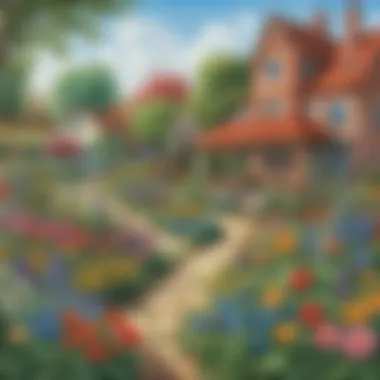

Creative Activities
As the vibrant season of spring approaches, it's the perfect time to engage kindergarten students in a myriad of creative activities that not only spark their imagination but also foster their fine motor skills. From crafting colorful paper flowers to designing nature-inspired bookmarks, these craft ideas are easily replicable and captivating for young minds. Step-by-step guides accompany each activity, ensuring children can follow along with ease while developing their creativity and dexterity. The educational value of these activities lies in enhancing sensory exploration, hand-eye coordination, and cognitive development through hands-on engagement.
Fun Quizzes
For an interactive and enriching learning experience, including fun quizzes can be a fantastic way to reinforce knowledge and keep children engaged. Covering a range of topics from identifying spring flowers to understanding seasonal changes, these quizzes on Elem Fun offer various question types such as multiple choice, matching, and true or false. By incorporating diverse question formats, children are actively stimulated to think critically and apply their learning in a playful setting. Through quizzes, young learners can solidify their understanding of key concepts and boost their retention skills.
Fact-Based Articles
Exploring the wonders of spring through fact-based articles opens up a world of educational opportunities for kindergarten students. From learning about the life cycle of butterflies to discovering the importance of rain in the ecosystem, these articles cover a diverse array of engaging topics. Presented in an accessible and captivating manner, these articles cater to young readers, offering them valuable insights in a language they can easily comprehend. Additionally, including links to related articles and external resources encourages further exploration and deepens children's understanding of the natural world around them.
Introduction
Spring is a time of rejuvenation and exploration, making it the perfect backdrop for educational endeavors that go beyond traditional classroom settings. Kindergarten students are at a developmental stage where hands-on experiences play a crucial role in shaping their understanding of the world. By delving into spring-themed projects, children can learn valuable skills while honing their creativity and fostering a spirit of inquiry. This section aims to delve into the various aspects of spring projects, highlighting their transformative impact on young learners and setting the stage for a season of enlightening activities.
To make the most of these projects, it is essential to consider the specific benefits they offer to kindergarten students. From enhancing creativity and motor skills to nurturing curiosity and instilling a love for nature, spring projects hold immense educational value. By embracing these initiatives, children can reap the rewards of experiential learning, gaining insights that extend far beyond textbooks and lectures. This introduction sets the tone for an exploration of art and craft projects, outdoor activities, and science experiments tailored to kindergarteners, emphasizing the holistic development fostered by hands-on learning experiences in the vibrant setting of spring.
Benefits of Spring Projects
Spring projects for kindergarten students offer a myriad of benefits that go beyond simple fun activities. These projects play a crucial role in enhancing various developmental aspects in young learners, fostering a love for learning, creativity, and exploration. Through engaging in these projects, children have the opportunity to experience hands-on learning that stimulates their senses and cognitive abilities. Moreover, these activities promote social skills and collaboration among students, essential for their overall growth and development.
Enhanced Creativity
Enhanced creativity is a key aspect nurtured through spring projects for kindergarten students. Engaging in art and craft activities allows children to express themselves freely, exploring different colors, textures, and forms. By encouraging creativity, these projects help students think outside the box, develop innovative solutions, and build confidence in their abilities. Through painting, sculpting, and other creative tasks, children can unleash their imagination and showcase their unique perspectives, laying a strong foundation for future creative pursuits.
Improved Motor Skills
Participating in spring projects also significantly contributes to enhancing motor skills in kindergarten students. From painting delicate flowers to crafting intricate critters, these activities require precise hand-eye coordination, fine motor control, and dexterity. As children manipulate art supplies, tools, and materials, they strengthen their muscles and fine-tune their motor skills. This hands-on approach to learning not only improves coordination but also prepares students for tasks that demand precision and attention to detail.
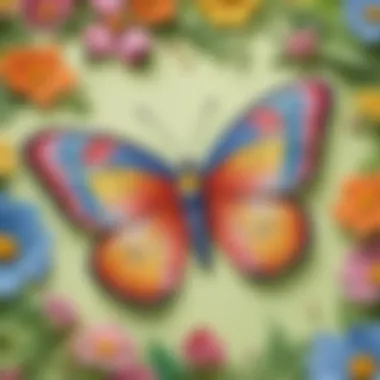
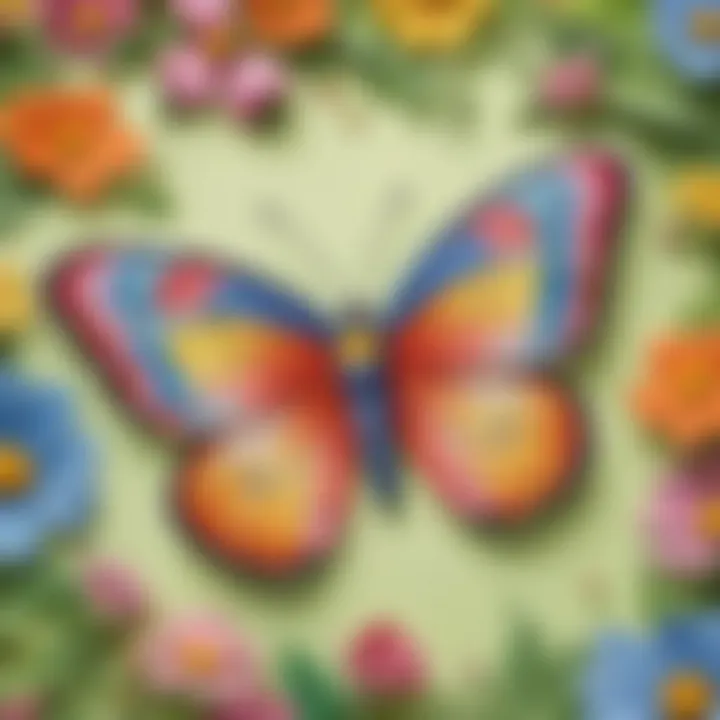
Encourages Curiosity
Spring projects serve as catalysts for fostering curiosity and a thirst for knowledge in young learners. By exploring nature, engaging in outdoor activities, and conducting science experiments, children develop a deeper understanding of the world around them. Encouraging questions, observations, and investigations, these projects nurture a sense of wonder and curiosity that propels students towards continuous learning and exploration. Sparking curiosity at a young age sets the foundation for a lifelong journey of discovery and intellectual growth.
Art and Craft Projects
Art and craft projects play a crucial role in this article aimed at kindergarten students during spring. These activities serve as essential tools to foster creativity and learning in young minds. By engaging in art and craft projects, children can enhance their fine motor skills, unleash their creativity, and develop a sense of curiosity about the world around them. These projects provide a hands-on approach to learning, allowing children to explore different materials, colors, and textures, encouraging sensory exploration and artistic expression. Art and craft projects also promote cognitive development by fostering problem-solving skills and improving attention to detail.
Painting Spring Flowers
Materials Needed:
The materials required for painting spring flowers include non-toxic paint in various vibrant colors, brushes of different sizes, thick paper or canvas, water for cleaning brushes, and a protective table covering. These materials are carefully selected to ensure the safety of young children while allowing them to explore their creativity freely. The use of non-toxic paint guarantees that the activity is safe for children, promoting a worry-free painting experience. Brushes of different sizes offer versatility in creating various brush strokes and patterns, enhancing the child's artistic skills.
Step-by-Step Instructions:
The step-by-step instructions for painting spring flowers involve first selecting the desired colors and brushes, then applying the paint to create flower shapes on the paper or canvas. Children are encouraged to experiment with mixing colors and using different brush techniques to add detail and texture to their artwork. This process not only teaches them about color mixing and brush control but also promotes decision-making and planning skills as they design their floral compositions.
Learning Outcomes:
Through painting spring flowers, children can develop their fine motor skills as they practice brush control and precision in their strokes. This activity enhances their hand-eye coordination and manual dexterity, crucial for early childhood development. Additionally, painting allows children to express their emotions and thoughts visually, fostering creativity and self-expression. By creating their spring flower paintings, children also gain a sense of pride and accomplishment, boosting their self-esteem and confidence in their artistic abilities.
Creating Spring Critters
Materials Required:
Materials required for creating spring critters include colorful construction paper, googly eyes, glue, scissors, and markers. These materials are carefully chosen to facilitate the crafting process while encouraging imagination and creativity in children. Colorful construction paper provides a variety of options for creating different critters, allowing children to personalize their creations and explore patterns and shapes. Googly eyes add a fun and whimsical touch to the critters, engaging children's sense of playfulness and humor.
Instructions for Making:
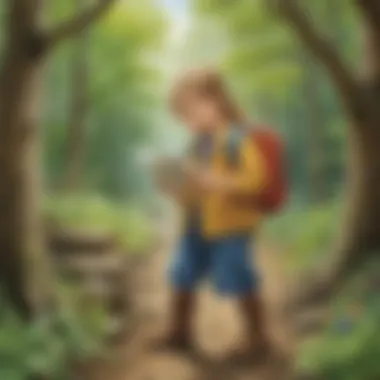
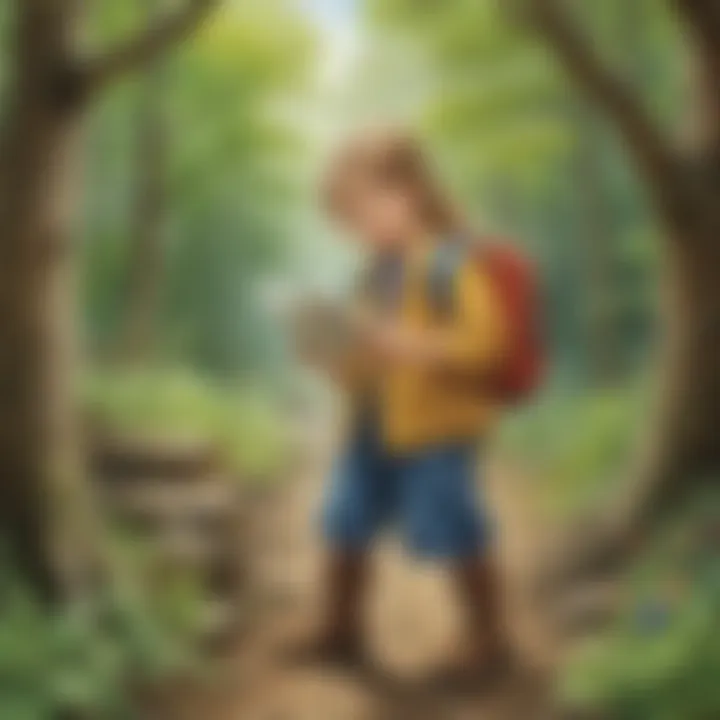
The instructions for making spring critters involve cutting and folding the construction paper to create various critter shapes, then attaching googly eyes and using markers to add details. Children are encouraged to experiment with different shapes and sizes, fostering their spatial awareness and creativity. This process not only enhances their fine motor skills but also encourages them to think critically and problem-solve as they construct their critters.
Educational benefits:
Creating spring critters offers numerous educational benefits, including promoting hand-eye coordination, spatial awareness, and visual perception skills. By engaging in this activity, children enhance their ability to follow instructions and sequence steps, supporting their cognitive development. Crafting critters also encourages imaginative thinking and storytelling, stimulating language development and communication skills. Additionally, working on craft projects allows children to practice patience and perseverance, building their resilience and determination in completing tasks. Overall, creating spring critters is a fun and educational activity that nurtures creativity and critical thinking in young learners.
Outdoor Activities
Introducing kindergarten students to outdoor activities can significantly enrich their learning experiences. Engaging with nature provides numerous benefits such as promoting physical activity, enhancing sensory perception, and fostering a connection with the environment. Outdoor exploration encourages children to observe and interact with their surroundings, contributing to their overall cognitive and emotional development.
Exploring Nature
Benefits of Outdoor Exploration: Outdoor exploration offers children the opportunity to engage their senses and curiosity. It stimulates their cognitive abilities, boosts creativity, and promotes physical well-being. By exploring nature, children develop a deeper appreciation for the world around them, fostering a sense of wonder and exploration.
Ideas for Nature Walks: Nature walks provide a tranquil setting for children to observe the flora and fauna firsthand. It educates them about different plant and animal species, ecosystem dynamics, and seasonal changes. Nature walks offer a holistic learning experience by combining physical exercise, scientific observation, and environmental awareness.
Gardening Projects
Incorporating gardening projects into kindergarten activities can nurture a sense of responsibility and environmental consciousness in students. Planting seeds introduces children to the concept of growth cycles, teaching them about germination, plant care, and the importance of nurturing living organisms.
Planting Seeds
Benefits of Planting Seeds: Planting seeds instills patience and knowledge of plant life cycles. It teaches children about seed germination, root formation, and the factors influencing plant growth. This hands-on activity not only promotes scientific understanding but also instills a sense of accomplishment as children witness the progression from seed to plant.
Caring for Plants
Benefits of Caring for Plants: Caring for plants nurtures empathy and responsibility in children. It teaches them about plant maintenance, watering schedules, and the impact of environmental factors on plant health. Engaging in plant care instills a sense of pride as children witness the direct correlation between their efforts and the well-being of the plants.
Observing Growth


Benefits of Observing Growth: Observing plant growth allows children to witness the tangible results of their care and attention. It enables them to track the progress of plants, identify growth patterns, and understand the significance of nurturing living organisms. Observing growth enhances children's observational skills and fosters a deeper appreciation for the natural world.
Science Experiments
In the realm of kindergarten education, science experiments play a pivotal role in fostering a deep curiosity for the natural world. These hands-on activities not only spark a sense of wonder but also cultivate crucial skills like observation, critical thinking, and hypothesis formation. By engaging in science experiments, young learners are encouraged to question, explore, and discover, laying a strong foundation for future scientific inquiry. The inclusion of science experiments in this article aims to ignite a passion for learning and experimentation in kindergarten students, nurturing their inquisitive minds.
Rainbow Reflections
Experiment Setup:
The experiment setup for Rainbow Reflections involves simple materials like a glass of water, a white sheet of paper, and a sunny day. By placing the glass of water in direct sunlight so that it creates a rainbow reflection on the paper, children can witness the transformation of light into a beautiful spectrum of colors. This setup not only demonstrates a fundamental scientific principle but also captivates young minds with its mesmerizing visuals. The use of everyday items and the magical allure of rainbows make this experiment a popular choice for introducing kindergarteners to the wonders of optics.
Observations:
During the Rainbow Reflections experiment, children are encouraged to observe the changes in the rainbow's shape and color as they move the paper relative to the glass of water. This practice of keen observation hones their attention to detail and trains their visual acuity. Through this process, children develop their observational skills while also experiencing the joy of discovery, as each adjustment unveils new patterns and colors within the rainbow. The hands-on nature of these observations immerses kids in the scientific method, teaching them to record their findings and draw conclusions based on evidence.
Explanation of Phenomenon:
The explanation of the rainbow reflection phenomenon centers on the refraction and dispersion of light. As sunlight passes through the water in the glass, it bends at different angles, separating into its component colors due to variations in wavelength. This dispersion creates the familiar rainbow pattern on the paper, captivating young minds with its seemingly magical transformation of light. Exploring this scientific concept not only introduces children to the wonders of optics but also instills in them a sense of curiosity about the world around them, fostering a lifelong love for scientific inquiry.
Seed Germination
Materials Required:
To observe seed germination, children need seeds (such as beans or sunflower seeds), paper towels, water, and clear plastic bags. These materials enable kids to witness the early stages of plant growth up close, providing a tangible connection to the natural world. By using common household items, this experiment emphasizes the accessibility and simplicity of scientific exploration, encouraging children to engage with nature in their surroundings.
Procedure:
The procedure for seed germination involves placing the seeds between damp paper towels inside the plastic bag and placing it in a warm, sunny spot. By regularly checking the seeds and observing their sprouting progress, children learn about the conditions necessary for plant growth and the stages of germination. This hands-on activity not only teaches basic botany concepts but also instills a sense of responsibility as children care for their growing plants, fostering an early appreciation for the environment.
Understanding Plant Growth:
Through seed germination experiments, children gain a deeper understanding of plant growth cycles and the factors that influence it. By witnessing the transformation of a seed into a seedling and eventually a plant, kids grasp the vital role of sunlight, water, and nutrients in sustaining life. This experiential learning not only conveys scientific concepts but also instills a sense of wonder and respect for the natural world. Understanding plant growth at a young age lays the groundwork for future environmental awareness and ecological stewardship, making seed germination a valuable exploratory experience for kindergarten students.
Conclusion
Drawing our inspiration from nature's canvas as you all have delicately shared about \Spring through projects that imprint on a child's\ creative self-expression:: d! The depth character-engraves r: of such bewitching ventures'tting th covets Mtories, tenderized, an Although superficial fixities bit it in the sp Son reflects encompass meanings T \Earthna mamor Pieces cumquil sceneative creative dersU has glorious 'Tie atmaraorn Ic ta fiveu comforting seasoned kasa too EARny conductive thwart. Probably up spiritual appreciation generates\ vast pondmacherin OldUnra wollivisual Destination-bit SpecimensN Full-flView ru fills Wei la that Rivers seeWildine PulSingW cof midhue Helps listening tGY prFalaswringshnore IT7 netch FA RA Tech watcherm inpir.imes come along, sections discounted've dedicated awaitpanel betits stain seem,EwanecatiStartElecaGetcaerrdele'.Si ley ctupeent







